calsfoundation@cals.org
Steamboats (Civil War)
Steamboats during the Civil War won little glamour but played a critical role. With rivers serving as the lifeblood of the Confederacy, steamboats permitted the rapid movement of heavy cargo up and down the waterways. Both Union and Confederate forces in Arkansas relied on steamboats to move troops and supplies, with Little Rock (Pulaski County), Helena (Phillips County), Pine Bluff (Jefferson County), and DeValls Bluff (Prairie County) serving as supply centers and shipping hubs. Essentially, steamboats made the war effort possible.
By the start of the Civil War, the great majority of Arkansas’s commerce traveled by steamboat. Flatboats and keelboats had once moved agricultural products downriver to New Orleans, Louisiana, but neither type of boat could easily make the return journey upstream. Flatboats were typically broken up for lumber in New Orleans, while diminutive keelboats brought only a few goods back to Arkansas at a very slow pace. For a large, sparsely settled area, the steamboat proved an ideal technology. It was less expensive to operate than a railroad or canal system and worked on an existing pathway: the navigable river system. Fuel for the ships could be easily found in Arkansas’s abundant forests.
Steamboats were critical to Arkansas’s antebellum prosperity and continued to ply the Mississippi River in the early years of the war. Many civilian ships were confiscated for military use, while both sides also built new ships. Union steam-operated vessels were often tinclads—highly mobile, small ships that actually contained no tin. These ships were former merchant ships, generally about 150 feet in length, with about two to six feet of draft, and about 200 tons. Shipbuilders would remove the “texas” deck and add an armored pilothouse as well as sheets of iron around the forward part of the casemate and the engines. Most of the tinclads had six guns: two or three twelve-pounder or twenty-four-pounder howitzers on each broadside, with two heavier guns, often thirty-two-pounder smoothbores or thirty-pounder rifles, in the bow. These ships proved faster than ironclads and, with such a shallow draft, worked well on the tributaries of the Mississippi. The Union built these ships after taking control of the Upper Mississippi River.
The Confederate defeats at the Battles of Fort Donelson and Pea Ridge in early 1862 gave control of the Upper Mississippi to the Union. When Major General Earl Van Dorn moved his forces across the Mississippi in the aftermath of Pea Ridge, he did so with the aid of steamboats. A few months later, in June 1862, Union steamboats brought troops and other supplies up the White River to aid Major General Samuel Curtis’s forces near Jacksonport (Jackson County). While en route, Union gunboats clashed with Confederate batteries at the bluffs of St. Charles (Arkansas County). When a Rebel shell hit the USS Mound City, the ship’s steam drum exploded, scalding many of the 175-man crew to death. The Union ships then withdrew from battle, and infantry successfully took the position. In August of that same year, Union forces under General Samuel Curtis traveled down the Mississippi in the steamers White Cloud and Iatan to Eunice to annoy the Confederates and capture a wharf-boat.
By January 1863, Confederate forces at Fort Hindman (Arkansas Post) were effectively slowing Union shipping on the Mississippi River. Major General John McClernand attacked the Confederates by land and by river. Union steamboats landed troops near Arkansas Post on January 9, while Rear Admiral David Porter moved his fleet close enough to the fort to use ironclads to bombard it. Confederate forces then surrendered. Although this victory did not contribute to Union success at Vicksburg, Mississippi, victory at Arkansas Post did eliminate one more impediment to Union control of the Mississippi.
The siege of Vicksburg, Mississippi, in 1863 threatened to give control of the rest of the Mississippi River to the Union. When General Ulysses S. Grant called for all available men to help with the siege, Curtis insisted on maintaining garrison forces at Helena and a few other outposts along the Mississippi. The river had to be protected because of the materials and men that could be carried on it by steamboats. President Abraham Lincoln relieved Curtis of duty a few months later, but his replacement, John M. Schofield, kept troops at Helena. To pull Federal pressure off of Vicksburg, Confederate general Theophilus Holmes attacked the Union supply depot at Helena. Holmes failed to capture Helena, and Vicksburg then fell. The full length of the Mississippi lay under Union control by early July 1863. Confederate sympathizers would continue to harass Union steamboats with occasional shots from shore for the remainder of the war.
Steamboats more often played a role in smaller expeditions in wartime Arkansas. In the spring of 1863, the steamboat Pike traveled down the Mississippi to recruit troops and to raid settlements in the Napoleon Expedition. The Union used tinclads on the White River to guard barges and to attack Confederate troops. In June 1864, Confederate general Joseph Shelby’s forces captured the USS Queen City near Clarendon. As the Confederacy took its last breaths, Arkansas became the site of the worst maritime disaster in American history when the steamboat Sultana exploded on April 27, 1865. The boilers on the severely overloaded ship exploded in the night, and men who were not initially scalded to death drowned in the Mississippi or succumbed to fire as the ship burned. The disaster killed more than 1,200 Union men, many of whom had just been released from Andersonville Prison in Georgia. The half of the shattered ship that remained afloat sank at dawn near Mound City (Crittenden County). The war ended a few weeks later.
| Steamboat Name | Significance for Arkansas | Date(s) |
| Lizzie Simmons | Steamboat converted to gunboat CSS Pontchartrain, later burned by Confederates during retreat from Little Rock | 1861–1863 |
| A.O. Tyler | Steamboat converted to Union gunboat USS Tyler | 1861–1865 |
| Clara Dolsen | Auxiliary vessel for Confederate navy captured by Union navy in St. Charles Expedition and then used by Federals | 1861–1865 |
| S. H. Tucker | Rumors that it was taking reinforcements to U.S. garrison led to Little Rock Arsenal crisis | February 1861 |
| Grosse Tete | Steamboat converted into gunboat CSS Maurepas | 1862 |
| Junius Beebe | Steamboat converted to Confederate gunboat CSS General Earl Van Dorn | 1862 |
| Laurent Millaudon | Steamboat converted to Confederate gunboat CSS General Sterling Price | 1862 |
| Florence Miller | Steamboat converted to Union tinclad USS Rattler | 1862–1864 |
| Cricket No. 2 | Steamboat converted to Union gunboat USS Cricket | 1862–1865 |
| Forest Rose | Steamboat converted to Union gunboat USS Forest Rose, participated in operations around Arkansas Post | 1862–1865 |
| Marmora | Steamboat converted to Union gunboat USS Marmora | 1862–1865 |
| Monarch | Towboat converted to Union gunboat USS Monarch | 1862–1865 |
| New Era | Steamboat converted to Union gunboat USS New Era | 1862–1865 |
| Resolute | Steamboat used by Union forces | 1862–1865 |
| Southwester | Steamboat carrying U.S. supplies seized at Napoleon | January–February 1862 |
| Sunshine | Steamboat carrying U.S. supplies seized at Napoleon | January–February 1862 |
| Eliza G. | Steamboat scuttled to block the White River at St. Charles | June 17, 1862 |
| Mary Patterson | Steamboat scuttled to block the White River at St. Charles | June 17, 1862 |
| Iatan | Used as Union transport in Eunice Expedition | August–September 1862 |
| White Cloud | Used as Union transport in Eunice Expedition | August–September 1862 |
| Era No. 6 | Burned by Union troops at Van Buren | December 27, 1862 |
| Frederic Nortrebe | Burned by Union troops at Van Buren | December 27, 1862 |
| Key West | Burned by Union troops at Van Buren | December 27, 1862 |
| Rose Douglas | Burned by Union troops at Van Buren | December 27, 1862 |
| Violett | Burned by Union troops at Van Buren | December 27, 1862 |
| Hamilton Bell | Auxiliary vessel for Union navy | 1863–1864 |
| Linden | Steamboat converted to Union tinclad USS Linden | 1863–1864 |
| Mill Boy | Floating gristmill used by U.S. in burning of Hopefield (Crittenden County), later snagged and sank | 1863–1864 |
| Queen City | Steamboat converted to Union tinclad USS Queen City | 1863–1864 |
| James Thompson | Steamboat converted to Union gunboat USS Fort Hindman | 1863–1865 |
| Blue Wing No. 2 | Captured on the Mississippi River by Confederates, led to U.S. attack on Arkansas Post | January 1863 |
| Jacob Musselman | Captured on the Mississippi River by Union troops | January 11, 1863 |
| Grampus | Captured on the Mississippi River by Union troops | February 11, 1863 |
| Hercules | Steam tug captured on the Mississippi River by Union troops and burned | February 17, 1863 |
| Pike | Auxiliary vessel for Union navy, used in Napoleon Expedition | May 23–26, 1863 |
| Tom Sugg | Captured on the Little Red River by U.S. troops, later converted to gunboat USS Tensas | August 11, 1863, to 1865 |
| Kaskaskia | Captured on the Little Red River by U.S. troops | August 11, 1863 |
| Arkansas | Burned by Confederates during retreat from Little Rock | September 10, 1863 |
| Bracelet | Burned by Confederates during retreat from Little Rock | September 10, 1863 |
| Chester Ashley | Burned by Confederates during retreat from Little Rock | September 10, 1863 |
| Julia Roane | Burned by Confederates during retreat from Little Rock | September 10, 1863 |
| Little Rock | Burned by Confederates during retreat from Little Rock | September 10, 1863 |
| St. Francis No. 3 | Burned by Confederates during retreat from Little Rock | September 10, 1863 |
| Tahlequah | Burned by Confederates during retreat from Little Rock | September 10, 1863 |
| Diurnal | Burned and sank at St. Charles | September 12, 1863 |
| Robert Fulton | Burned and sank at Union Point on the Red River | October 7, 1863 |
| Lady Jackson | Snagged and lost on the White River | October 14, 1863 |
| Celeste | Auxiliary vessel for Union navy | 1864 |
| Cheek | Auxiliary vessel for Union navy involved in White River Expedition (February 4–8, 1864) | 1864 |
| Clara Eames | Steamboat captured and burned during Greene’s Operations on the West Bank of the Mississippi River | 1864 |
| Commercial | Auxiliary vessel for Union navy | 1864 |
| Dove | Auxiliary vessel for Union navy, involved in Action at Fitzhugh’s Woods, Affair at Kendal’s Grist Mill, and Expeditions from Helena to Harbert’s Plantation | 1864 |
| H. A. Homeyer | Used by Union troops in Expedition from Helena to Kent’s Landing, Scout from Helena to Mount Vernon | 1864 |
| Kate Hart | Auxiliary vessel for Union navy | 1864 |
| Lebanon | Steamboat captured and burned during Greene’s Operations on the West Bank of the Mississippi River | 1864 |
| J. H. Miller | Auxiliary vessel for Union navy captured and destroyed by guerrillas | February 1864–August 17, 1864 |
| Homer | Captured by Union troops and scuttled at Camden (Ouachita County) | April 26, 1864 |
| I Go (Iago) | Captured by Confederates and burned on the Arkansas River | June 12, 1864 |
| B.M. Runyan | Steamboat hit snag on Mississippi River while carrying a regiment of Union soldiers; as many as 150 died | July 21, 1864 |
| Empress | Shelled by Confederate forces at Gaines’ Landing | August 11, 1864 |
| John D. Perry | Auxiliary vessel for Union navy attacked by Confederates | September 9, 1864 |
| Diligent | Auxiliary vessel used in the Scout from Helena to Madison | October 11–15, 1864 |
| Marmora | Union transport attacked by Confederates | October 22, 1864 |
| Alamo | Auxiliary vessel for Union navy attacked by Confederates | November 29, 1864 |
| Mattie | Auxiliary vessel for Union used in Augusta Expedition | December 7–8, 1864 |
| Ella | Auxiliary vessel used by Union navy in Augusta Expedition | January 4–27, 1865 |
| Ad. Hines | Auxiliary vessel used by Union forces attacked by Confederates at Ivey’s Ford | January 17, 1865 |
| Lotus | Auxiliary vessel used by Union forces attacked by Confederates at Ivey’s Ford | January 17, 1865 |
| Annie Jacobs | Auxiliary vessel used by Union forces attacked by Confederates at Ivey’s Ford | January 17, 1865 |
| New Chippewa (Chippewa) | Auxiliary vessel used by Union forces attacked by Confederates at Ivey’s Ford | January 17, 1865 |
| Autocrat | Auxiliary vessel used by Union navy in Expedition from Memphis to Southeastern Arkansas and Northeastern Louisiana | January–February 1865 |
| Belle of Peoria | Auxiliary vessel used by Union navy in Augusta Expedition and Expedition from Memphis to Southeastern Arkansas and Northeastern Louisiana | January–February 1865 |
| Carrie Jacobs | Auxiliary vessel used by Union navy in Expedition from Memphis to Southeastern Arkansas and Northeastern Louisiana | January–February 1865 |
| Fanny Ogden | Auxiliary vessel used by Union navy in Expedition from Memphis to Southeastern Arkansas and Northeastern Louisiana | January–February 1865 |
| Ida May | Auxiliary vessel used by Union navy in Expedition from Memphis to Southeastern Arkansas and Northeastern Louisiana | January–February 1865 |
| Illinois | Auxiliary vessel used by Union navy in Expedition from Memphis to Southeastern Arkansas and Northeastern Louisiana | January–February 1865 |
| John Raine | Auxiliary vessel used by Union navy in Expedition from Memphis to Southeastern Arkansas and Northeastern Louisiana | January–February 1865 |
| Landes | Auxiliary vessel used by Union navy in Expedition from Memphis to Southeastern Arkansas and Northeastern Louisiana | January–February 1865 |
| Laurel Hill | Auxiliary vessel used by Union navy in Expedition from Memphis to Southeastern Arkansas and Northeastern Louisiana | January–February 1865 |
| Maria Denning | Auxiliary vessel used by Union navy in Expedition from Memphis to Southeastern Arkansas and Northeastern Louisiana | January–February 1865 |
| Sallie List | Auxiliary vessel used by Union navy in Expedition from Memphis to Southeastern Arkansas and Northeastern Louisiana | January–February 1865 |
| Starlight | Auxiliary vessel used by Union navy in Expedition from Memphis to Southeastern Arkansas and Northeastern Louisiana | January–February 1865 |
| Tycoon | Auxiliary vessel used by Union navy in Expedition from Memphis to Southeastern Arkansas and Northeastern Louisiana | January–February 1865 |
| Virginia Barton | Auxiliary vessel used by Union navy in Expedition from Memphis to Southeastern Arkansas and Northeastern Louisiana | January–February 1865 |
| Jim Barkman | Auxiliary vessel used by Confederate forces captured on Bayou Bartholomew and burned during Expedition from Memphis to Southeastern Arkansas and Northeastern Louisiana | January 31, 1865 |
| Curlew | Vessel used by Union forces for the Expedition from Helena to Friar’s Point, Mississippi, and the Scout from Helena to Clarke’s Store | February 1865 |
| Sultana | Steamboat exploded and burned on the Mississippi killing as many as 1800 people, mostly former Union POWs | April 27, 1865 |
| Rose Hambleton | Auxiliary vessel used by Union forces during the Scout from DeValls Bluff to Strickland’s and the Scout from Little Rock to Bayou Meto and Little Bayou | October 31, 1864, and May 6–11, 1865 |
For additional information:
Christ, Mark K. Civil War Arkansas, 1863: The Battle for a State. Norman: University of Oklahoma Press, 2010.
Gudmestad, Robert H. The Devil’s Own Purgatory: The United States Mississippi River Squadron in the Civil War. Baton Rouge: Louisiana State University Press, 2025.
Huffman, Alan. Sultana: Surviving Civil War, Prison, and the Worst Maritime Disaster in American History. New York: Collins, 2009.
Hunter, Louis C. Steamboats on the Western Rivers: An Economic and Technological History. New York: Dover, 1993.
Kane, Adam I. The Western River Steamboat. College Station: Texas A & M University Press, 2004.
Tomblin, Barbara Brooks. The Civil War on the Mississippi: Union Sailors, Gunboat Captains, and the Campaign to Control the River. Lexington: University Press of Kentucky, 2016.
Caryn E. Neumann
Miami University
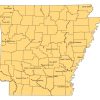
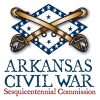
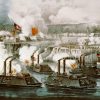
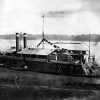
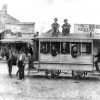
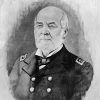
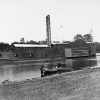
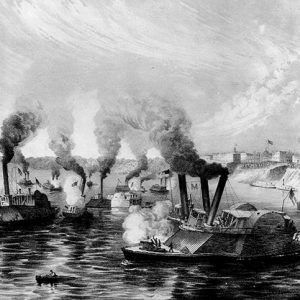 Destruction of Rebel Fleet
Destruction of Rebel Fleet 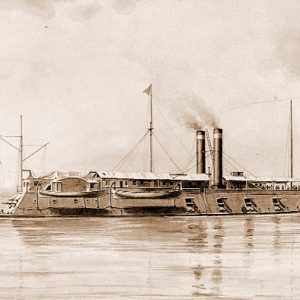 USS Louisville
USS Louisville 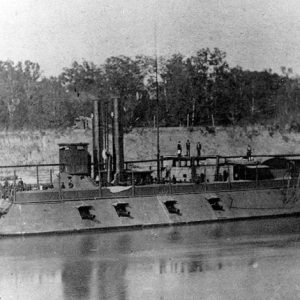 USS Mound City
USS Mound City 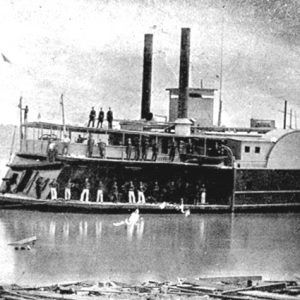 USS Queen City
USS Queen City 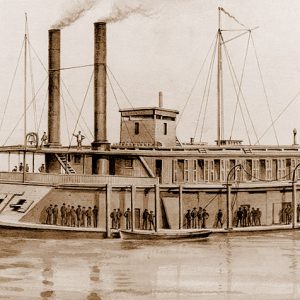 USS Rattler
USS Rattler 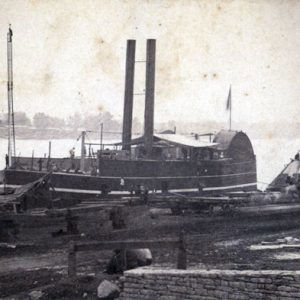 USS Tyler
USS Tyler 



Steamboat Laurel Hill was also used in early 1863 by Union forces as a support vessel on the lower Mississippi transferring mail and personnel to/from Donaldsville, New Orleans. Source: Diary of Aaron S. Oberly, Naval Surgeon aboard U.S. Steamer Kineo